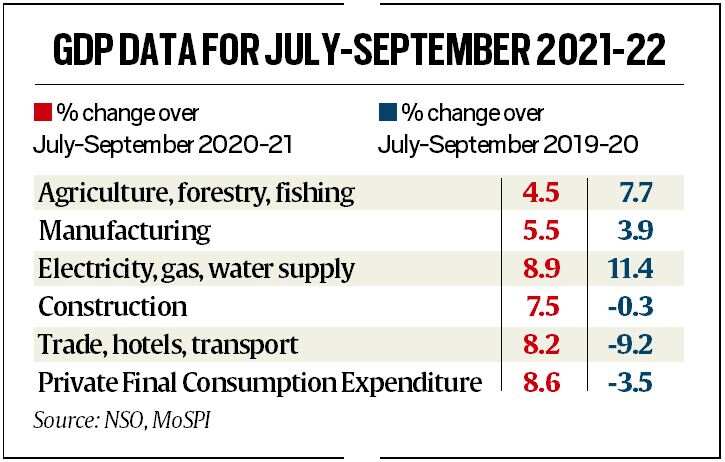7667766266
enquiry@shankarias.in
Why in news?
Ministry of Statistics and Programme Implementation (MoSPI) has released the GDP data for the second quarter (July, August and September) of the current financial year (2021-22).
To know about Q1 GDP Data (2021-22), click here
GDP = Private consumption (C) + Private investment (I) + Government expenditure (G) + [Exports – Imports] (X-M)

GVA = GDP + (Subsidies provided by the government) - (Taxes earned by the government)
References